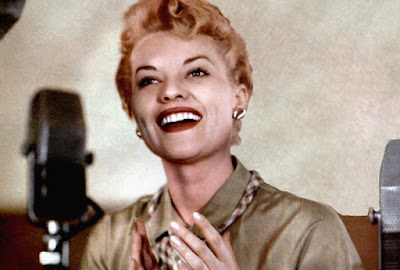 |
| The Mills Brothers in the 1920s (Photo owned by Daniel R. Clemson) |
All in all, Armstrong and the brothers recorded eleven songs together over a three-year period that goes from April 1937 to April 1940. The material chosen for these sessions is rather eclectic, from novelty numbers like "Boog It," "The Flat Foot Floogie," and Irving Berlin's "My Walking Stick" to updates of minstrel material like "In the Shade of the Old Apple Tree" to pop songs of the day such as "Marie" and "The Song Is Ended," both of them written by Berlin as well. The atmosphere of all the sessions—there were six in all—is extremely relaxed, with the brothers harmonizing and Armstrong offering hip vocals and some excellent trumpet solos to complement the Millses' signature sound effects. Most of the songs feature brief guitar introductions, and as in the case of Don Redman's "Cherry," one of the standouts from these sessions, the interactions between Armstrong and the brothers are seamless. All the songs are tightly arranged and clearly intended as both jazz and pop records that could be appealing to different audiences.
At least one of the singles that came out of these dates was extremely popular—the one that paired "Carry Me Back to Old Virginny" and "Darling Nellie Gray," which ended a brief hit drought for the Millses. By the late 1930s it had become common practice in the recording industry to use nineteenth-century songs, mostly because they had fallen into the public domain, but this particular disc is unique in that Amstrong and the brothers not only swing and modernize these two songs about slavery and the old plantation but they also turn them into subtle calls for freedom. As Gary Giddins has written in Visions of Jazz, this record is "a politically astute response to the pastoralism that became rife in the recording industry of the '30s and continued into the early '60s" (24). In the hands of Armstrong and the brothers, "Old Virginny" no longer expresses a yearning to go back to working "day after day in the fields of yellow corn" but becomes a shout for political and social freedom, which is underscored by the choice of the abolitionist song, "Darling Nellie Gray," for the flip side. It seems appropriate to quote Giddins more at length on this subject:
Perhaps Armstrong's most able signifying comes at the end of the first eight bars of his thirty-two-bar solo, an unmistakable trumpet call—to freedom in life. If the flip side had been a similar piece or an ordinary ballad, the record would—despite Armstrong's saves—have limited meaning. But "Darling Nellie Gray" was one of the most powerful abolitionist songs of the 1850s; published only four years after Uncle Tom's Cabin, it is widely credited with changing people's minds on both sides of the Mason-Dixon Line. (26)
 |
| The Mills Brothers (Photo owned by D.R. Clemson) |




































